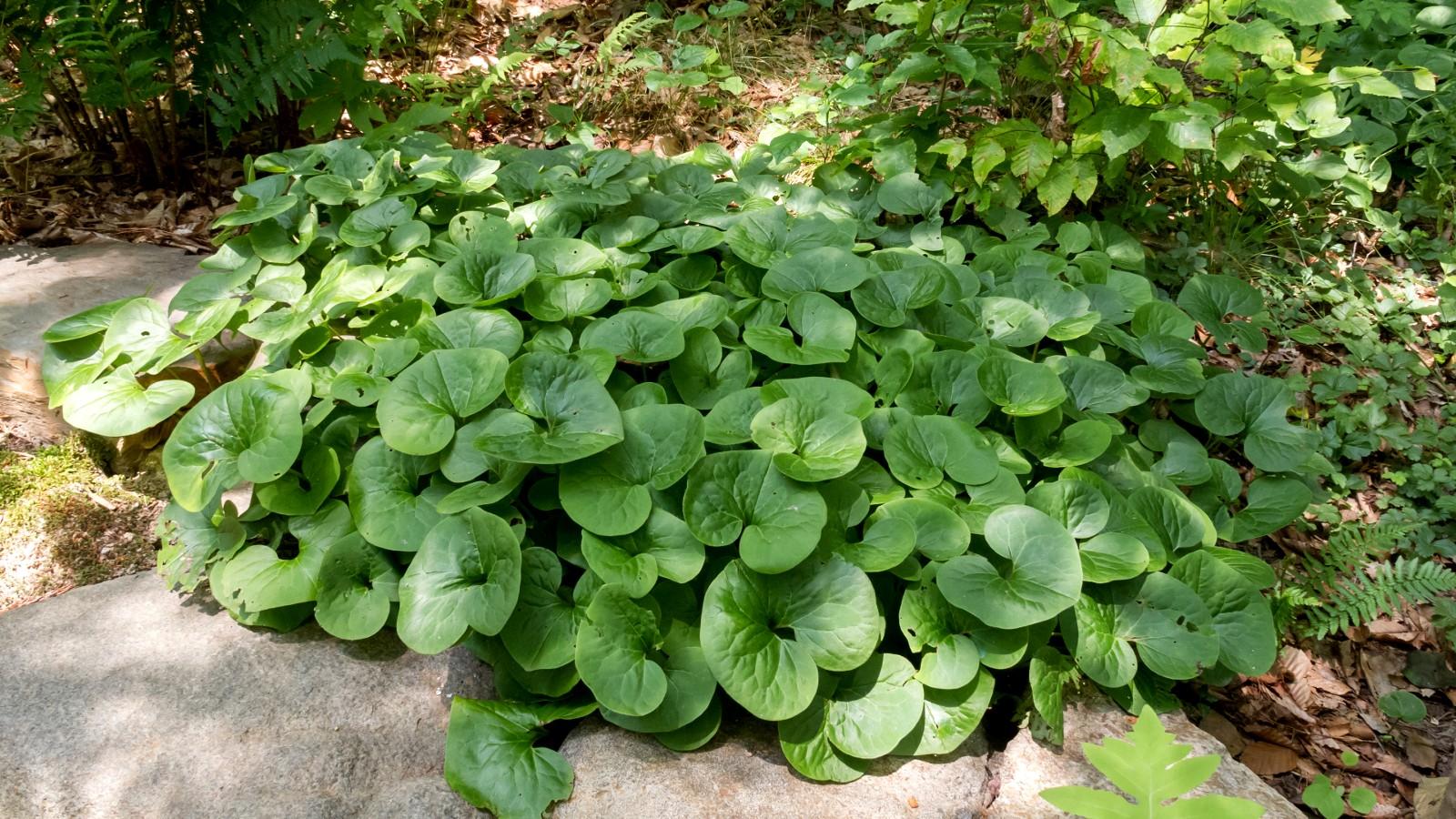
Wild ginger is a fascinating plant that holds a wealth of captivating facts. From its unique appearance to its beneficial properties, this perennial herbaceous plant has entranced plant lovers and herbalists alike for centuries. Native to North America, wild ginger, also known as Asarum canadense, belongs to the family Aristolochiaceae, and is renowned for its distinctive heart-shaped leaves and hidden, bell-shaped flowers.
In this article, we will delve into the enchanting world of wild ginger and explore twelve captivating facts about this remarkable plant. So, whether you have a passion for botany, a love for gardening, or simply an interest in discovering new and intriguing plant species, read on to uncover the secrets of wild ginger!
Key Takeaways:
- Wild ginger has medicinal properties, unique heart-shaped leaves, and attracts pollinators. It’s not related to culinary ginger and is a symbol of protection in some cultures.
- Wild ginger is native to North America and Asia, spreads through rhizomes, and is deer-resistant. It has ornamental value and is edible in moderation, with a distinctive scent when leaves are crushed.
Wild Ginger Has Medicinal Properties
Wild ginger, scientifically known as Asarum, has been used for centuries in traditional medicine for its various healing properties. Its rhizomes contain compounds that possess anti-inflammatory and analgesic effects, making it a natural remedy for ailments like headaches, digestive issues, and arthritis.
Wild Ginger is Not Related to Culinary Ginger
Despite its name, wild ginger is not related to the ginger commonly used in cooking. While culinary ginger belongs to the Zingiberaceae family, wild ginger belongs to the Aristolochiaceae family. They differ in appearance, taste, and uses.
Wild Ginger is Native to North America and Asia
Wild ginger is found in various parts of North America, including the eastern United States and parts of Canada. It is also native to certain regions of Asia, such as China and Japan. The plant thrives in shaded woodland areas with rich, moist soil.
Wild Ginger Has Unique Heart-Shaped Leaves
One of the distinguishing features of wild ginger is its heart-shaped leaves. The glossy, dark green foliage adds an attractive element to woodland gardens. The leaves grow in pairs and can measure up to six inches across.
Wild Ginger Attracts Pollinators
While wild ginger does not produce nectar, its unique flowers attract certain pollinators. The bell-shaped blooms have a deep maroon coloring and a subtle fragrance that entices small insects like beetles and flies.
Wild Ginger Spreads Through Rhizomes
Wild ginger spreads through its rhizomes, which are underground stems that produce new plant shoots. The rhizomes grow horizontally near the soil surface, creating a dense ground cover of interconnected plants.
Wild Ginger Plays a Role in Native American Culture
In Native American cultures, wild ginger has both practical and spiritual significance. The Cherokee tribe, for example, used it as a seasoning and flavoring agent, while the Ojibwa tribe used it in traditional ceremonies and rituals.
Wild Ginger Leaves Have a Distinctive Scent
When the leaves of wild ginger are crushed or bruised, they release a pleasant aroma reminiscent of spicy ginger. This fragrance adds to the overall appeal of the plant and enhances the sensory experience in woodland gardens.
Wild Ginger Has Ornamental Value
Due to its attractive foliage and low-maintenance nature, wild ginger is often grown as an ornamental plant in gardens and landscapes. It provides a lush ground cover in shaded areas and can be used as a natural border or edging plant.
Wild Ginger is Deer-Resistant
Deer typically avoid feeding on wild ginger due to its pungent aroma and taste. This makes it an ideal choice for gardeners looking to protect their plants from deer damage.
Wild Ginger is Edible in Moderation
While culinary ginger and wild ginger are not the same plant, the rhizomes of wild ginger can be consumed in moderation. However, it is important to note that excessive consumption may have adverse effects, so it is best to consult a knowledgeable expert before trying it.
Wild Ginger is a Symbol of Protection
In some cultures, wild ginger is considered a symbol of protection. It is believed to ward off negative energies and provide spiritual shield. The plant is sometimes used in rituals and ceremonies for this purpose.
Conclusion
Wild ginger is a fascinating plant that offers both visual appeal and numerous health benefits. Its unique characteristics and historical uses make it a captivating subject for study and appreciation. From its beautiful heart-shaped leaves to its distinctive fragrance and medicinal properties, wild ginger continues to intrigue botanists, herbalists, and nature enthusiasts alike. So, the next time you come across wild ginger in the wilderness, take a moment to appreciate its beauty and remember the intriguing facts you’ve learned about this remarkable plant.
FAQs
1. What is the scientific name for wild ginger?
The scientific name for wild ginger is Asarum.
2. Can I use wild ginger in cooking?
Yes, wild ginger has a strong, spicy flavor and is often used as a substitute for true ginger in recipes.
3. Are there any health benefits associated with wild ginger?
Yes, wild ginger has been used in traditional medicine for its anti-inflammatory, digestive, and antibacterial properties.
4. Where can I find wild ginger?
Wild ginger is commonly found in temperate regions, particularly in shaded woodlands and moist soil.
5. Is wild ginger safe for consumption?
While wild ginger can be safely consumed in moderation, it is always best to consult with a healthcare professional before using it for medicinal purposes.
Wild ginger's allure extends beyond its 12 captivating facts. Unravel more enigmatic aspects of this intriguing plant, from its role in folklore to its lesser-known botanical relatives. Asarum, wild ginger's scientific name, holds fascinating secrets waiting to be discovered. For those drawn to vibrant hues, red ginger offers a striking contrast to its green-leaved counterpart, boasting its own set of captivating characteristics.
Was this page helpful?
Our commitment to delivering trustworthy and engaging content is at the heart of what we do. Each fact on our site is contributed by real users like you, bringing a wealth of diverse insights and information. To ensure the highest standards of accuracy and reliability, our dedicated editors meticulously review each submission. This process guarantees that the facts we share are not only fascinating but also credible. Trust in our commitment to quality and authenticity as you explore and learn with us.


